Lilac is one of the most popular decorative shrubs, which gardeners from many countries of the world are chosen to decorate their sites. Lilac is chosen not only because of her mounted and bright aroma, but also because of unpretentiousness in growing. There are many varieties of lilac, but in this article we will talk about the lilac Amur, which in the people is often called "Trescut". Such an unusual name shrub deserved due to the characteristic loud cod, which you can hear if you throw lilac branches into the fire.
Amur Lilac - Description
- Lilac Amur belongs to the family of Maslian family Lilac.
- The homeland of Lilac Amur is considered to be Manchuria, China, Korea, Amur region, Khabarovsk region, seaside edges.
- Lilac Amur was opened in 1855, and the first botanical description was obtained in 1857 by Russian botanists.
- Lilac Amur in the wild prefers to grow on mountain slopes, on the shores of the reservoirs, in mixed forests, in shrub thickets.
- Amur lilac in the wild can reach 20 meters in height. Under favorable conditions in the garden can grow up to 10 meters.
- Lilac Amur is considered a long-lived tree, as it can grow in one place for about 100 years.
- Amur lilac trunk can reach 30 cm in diameter. It is covered with a dark gray bark, brown.
- Amur lilac leaves can reach from 5 to 11 cm long and have an ellipsis form, which is characteristic of most other varieties of lilac. With the coming of autumn, the leaves of Lilac Amur acquire golden or purple shades, which gives the tree even greater decorative value.
- A distinctive feature of Lilac Amur is that it blooms a little later than the lilac ordinary. The period of active flowering occurs in late June or early July. Lilac Amur blooms white or slightly cream colors, which are collected in inflorescences with a length of about 20-25 cm and a diameter of about 20 cm. Lilac flowers are very small - about 5-6 mm in diameter. Lilac Amur blooming about 3 weeks.
- After the end of the flowering period of the Amur lilac in the place of the blurred inflorescences, seed boxes are formed. Seeds are pretty large - about 1.5 mm long and about 6 mm width.
- Lilac Amur is an excellent option not only for decorating a private garden, but also for decorating urban streets. The plant is very hardly, has a strongly developed root system, drought-resistant and frost-resistant. "Sister" Lilac Amur consider Lilac Japanese.
Environmental properties of the Lilac Amur
- Lilac Amur is often chosen for landing not only because of the high decorativeness of this culture, but also due to its ability to strengthen the soil. This type of lilac has an unusually developed root system, due to which the coast strengthening, slopes, hills take place. Especially useful to plant Amur lilac near the reservoirs.
- Lilac Amur - Beautiful honey. An unusually pleasant and strong aroma manits bees and other insects.
- Lilac Amur has high resistance to polluted urban air. It is for this reason that this culture is often chosen to reflect the squares, parks, lively streets in cities. Lilac Amur grows perfectly even on poor and stony soils, decorating and transforming any terrain.
Lilac Amur Sudarushka
Lilac Amur to buy not always easy. Lilac is much greater popularity. But in large horticultural stores, you can buy seeds of the most famous Lilac Amur variety - Sudarushka. A multi-shrub can reach 10 meters in height. The bark is very similar in appearance on Cherry Corra. Lilac Sudarushka is inclined to change the color of the leaves during the growing season. At the dissolution of the foliage, there is a greenish-purple color, in summer - dark green, and the leaves are painted in purple and golden shades in the fall. Lilac blooms with small white flowers, collected in the blurred inflorescences up to 25 cm long.
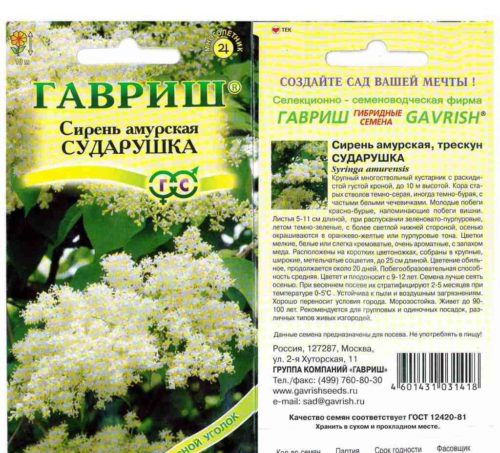
This variety actively attracts bees while flowering with its strong honey aroma. Seeds of Lilac Amur Sudarushka before landing must be stratified. If the seeds are sowing in the spring, they are maintained at a temperature of 0-5 degrees for 2-5 months. Also permissible and autumn seed landing. In this case, the seeds are not necessary to expose artificial stratification. The variety is known for its frost resistance, drought-resistance, urban dust resistance and contaminated air. The life cycle of the shrub can be 90-100 years.
Lilac Amur - Photo
Amur Lilac - landing
Where Amurskaya Lilac is growing - choice of place
Amur lilac in the wild is growing perfectly even in very unfavorable conditions. However, to achieve the most beautiful and lush flowering of lilac, it is important to take care of choosing the right place to land. Try to adhere to the following recommendations:
- lilac Amur very negatively refers to wetlands, low-rise plots, sites with close adjacent to the surface of the groundwater;
- when choosing a place to land for Lilac Amur, give preference to well-lit plots. In shady places, under the thick crown of high trees lilac will bloom not so abundantly as it could;
- when choosing a place to land, try to avoid areas with strong winds and drafts.
What the soil prefers Amur Lilac
Amur lilac will grow especially well on the ground, which will have the following characteristics:
- the soil must be permeable;
- the soil should be nutritious;
- the soil must be enriched with organic fertilizers;
- the soil should be with a weakly acidic or neutral reaction 6.0-7.5 pH;
- the soil must be well moistened, but not wetlands.
If the clay and heavy soil prevails on your site, then the conditions for lilac Amur more comfortable can be very simple. You can purchase the finished primer in the store with all the characteristics listed above and use it to fill the landing pit.
When to plant lilac amur
Beginners of gardeners always worries the issue of plants landing. When to plant the seedlings of Lilac Amur to open ground? In the climatic conditions of the middle strip, this culture is recommended to plant at the end of summer or at the beginning of autumn. These are the deadlocks that guarantee a good rooting of seedlings. It should also be noted that only those seedlings of Lilac Amur, on which there are green leaves. If the leaves are faltered, then the landing time is already missed, and you should wait for the next season. If the Amur Lilac transplant is required, then it is possible to spend it in the second half of summer. At this time, the rest period comes for lilac. The time between digging and landing lilac to a new place must be minimized. And immediately after planting the surface of the earth, it is necessary to climb wood ash.
Lilac Fireplace Technology
- Approximately 2-3 weeks before the landing, start to prepare a place to land the lilac Amur. Thoroughly shry the soil, remove weeds and their roots. To make any fertilizers when soil looser is not necessary, as they will be added directly into the landing hole.
- Dig a landing pit. It should be about 50-60 cm in width and depth. If the soil on the site is too poor, then dig a hole with a width and a depth of about 100 cm so that there is a place to make fertilizers. To fill the pit, you can buy a ready-made nutrient soil in the store or add wood ashes, any organic fertilizer in the ground.
- In the center of the landing pit, build a small hilly from a nutrient earth mixture. Install the seedling on the top of this hilly.
- Holding a seedling with one hand, start to fill the landing pit. A seedling must be periodically shaken so that the land evenly filled all air emptiness between the roots.
- After filling out the landing pit, the root cervix of the Amur lilac should be at the level of the earth.
- Immediately after landing, Pour Lilac Amur and inspired the rolling circle.
Amur Lilac - Care
Watering the Amur Lilan.
- Lilac Amur loves moisturized soil, so regular watering is very important for this plant. The lack of moisture adversely affects the appearance of lilac. Shrub begins to fade, flowering ceases to be so abundant. Especially dangerous insufficient watering on sandy soils.
- Despite the fact that Lilac Amurskaya loves the moistened soil, to allow the dispensing of the earthen koma in no case. If you allow a strong water delay in the roots of the plant for 1-2 days, then lilac can even die.
- The plant is watered more often and rich in the first half of summer, in the second half of summer, watering is gradually reduced, and in the fall removed him at all. But always need to focus on weather conditions in a particular region at the moment. If the second half of the summer turned out to be too dry, then watering is not reduced. If it was extremely hot and dry autumn, then watering may be stopped early.
- If you do not stop watering Lilac Amur in the fall, then in winter the root system of shrub can freeze.
- If summer is rainy, then watering needs to be cut or remove at all.
- Experienced gardeners advise to increase the volume of water during watering, if the place of growth of Lilac Amur is too windy.
- In the summer, one plant should leave about 20 liters of water.
- Water Lilac Amur best in the evening, like most other ornamental shrubs in the garden.
- The younger lilac Amur, the smaller the area of \u200b\u200bwatering.
- If in the air, where the lilac Amurskaya grows, contains any gas (for example, sulfur), then the plant cannot be sprayed. Due to spraying on the leaves can form descendants.
Loosening and removal of weeds around Lilac Amur
Every watering of lilac Amur needs to be combined with soil loosening and removal of weeds. If lilac is growing near the road, on an urban street, then a regular spraying is carried out to clean the leaves.
- If you climb the surface of the soil around the lilac Amur, then the need to loosen and remove weeds will come less frequently.
- You can not allow that crust formed on the surface of the soil.
- If the surface of the soil has not been inspired, about 3-4 loosening procedures may be needed for the growing season.
- To loosen the earth around Lilac Amur follows to a depth of 4-7 cm.
- Wearing grass can be a serious danger not only for lilac Amur, but also for any other decorative plant on the site. Especially dangerous weeds for young plants.
- Particularly dangerous weeds for lilac Amur - dandelions, sick, drinking.
Fucking lilac Amur
In the frequency, making feeders and their need for lilac Amur the opinion of the gardeners are divided. Some experts advise to begin to make nitrogen fertilizers for the second year after landing, which will contribute to the better development of the root system and the good growth of shoots. Adherents of this theory offer the following scheme to make fertilizers:
- the first feeding of Amur Lilac nitric fertilizers can be carried out early in spring. You can make fertilizers even when the snow came out yet completely;
- the second feeding of nitrogen fertilizers should take place after 3 weeks;
- the third feeding of nitrogen fertilizers also spend approximately 3 weeks, but not later August.
Other gardeners believe that any feeding should be made only on the 2nd or 3rd year after landing. Apply them follows the following scheme:
- the first feeding is carried out early in the spring at the time of the awakening of the kidneys. It is better to give preference to ready-made complex mineral organic fertilizers;
- the second feeding of Amur Lilac is carried out approximately 3-3.5 weeks. At this time, it is better to make a solution of cow manure or bird litter. Depending on the age of lilac, it may be necessary to be required from 1 to 3 vender of such liquid organic fertilizer;
- the third subcortex of the Lilac Amur is also carried out approximately 3-3.5 weeks with a solution of manure or litter. It is also worth noting, the last application of fertilizers should be held no later than the beginning of August.
Pruning lilac Amur
Lilac Amur is a decorative shrub that requires mandatory trimming, if you want to achieve a lush and long-lasting flowering.
- Starting to carry out the forming cutting of lilac Amur should be on the 3rd year after landing. In early spring until the kidney wake up, cutting the shoots running deep into the crowns. Basics should be branches that give the plant height. Of course, the patients should be removed, the root piglery should be removed. After the end of flowering, the blurred inflorescences are removed. If there are shoots that are steels on the ground, they should also be trimmed.
- Sanitary trim can be carried out at any time. Regularly examine the decorative shrub on the presence of sick leaves deformed by the escape disease and timely delete them.
Methods of reproduction of Lilac Amur
Lilac Amur from seeds
Amur lilac seeds can be bought in the store, but you can try to collect yourself, if such a kind of lilac is already growing on your site. Prepare for the process of growing lilac from seeds will be quite long. Landing in open ground will be possible only a few years after seeding. Consider exemplary instructions for growing lilac Amur from seeds:
- if you decide to assemble the Seeds of the Amur Lilac manually, then you need to do it in wet weather so that the boxes with the seeds do not crack. The collected boxes must be dried at room temperature for several days, and then remove seeds;
- seeds of Lilac Amur must be subjected to stratification before landing. To do this, place the lilac seeds into wet river sand into the capacitance with the holes below. Put the seeds on the lower shelf in the refrigerator, where they should stand for 2 months;
- after 2 months, prepare the nutritional soil. Before immersing the seeds in it, it is necessary to shed it with boiling water;
- after the seedlings of Lilac Amur will grow little, it is necessary to make them pickup;
- after the root system of seedlings is growing slightly, lilac can be planted in an open ground. However, before the transfer to the place of permanent growth must pass a couple of years.
Reproduction of lilac Amur cuttings
Attempt to propagate lilac with cuttings, even an inexperienced gardener can. You can propagate with green cuttings and weathered cuttings. Consider a more easy and efficient way - with the help of green cuttings.
- The billet of green cuttings needs to be engaged in spring.
- Choose lateral escape and with the help of a sharp knife separating the cutlets with a length of about 15 cm. The slice must necessarily be oblique, and at least 3 pairs of kidneys should be on the cuttings.
- Next, you need to shorten all the leaves on the cutting, and the lower pair of leaves is completely removed. Direct slice remove the tip of escape.
- Soak the cuttings in a solution of any root formation stimulator.
- Prepare the boarding hole. At the bottom, be sure to place the drainage layer, then pour the layer by humus, then the nutritional soil.
- Put the cuttings to the prepared hole.
- In order for cuttings to root, you need to create optimal conditions for this. You can roam the cuttings at home. If you do it in bed, you need to build a mini-greenhouse. The film in no way should touch the cuttings. The height of the greenhouse must be at least 50 cm.
- Water cuttings, ventilate the greenhouse. Fitting leaves is a normal process when roaring the cuttings.
- Optimal temperature conditions - 20-25 degrees of heat and 90-95% humidity.
- It is possible to remove the greenhouse in approximately 1-1.5 months. Do not wait for all the cuttings. That is why it is necessary to plant as much green cuttings as possible, to then choose to transplantation to a permanent place of growth, the strongest copies.
- Already in the fall, you can transfer to the permanent place of growth rooted strong sprouts of Lilac Amur.
Lilac reproduction by Amur
If a rather adult bush of Lilac Amur bush is already growing on your site, then you can try to multiply it with the help of melting. This method is to flexing the side escape to the Earth, waiting for its rooting and separating a new plant from the maternal bush. Depending on how the fractures are fixed, the following methods are distinguished:
- simple flexion of lilac escape. This method is the most popular. The lateral escape of Lilac Amur is flexible to the ground, fastened with brackets or studs and falling asleep with soil. We should water the grain, shove the land if necessary. Own root system, which will allow a new plant to separate from the maternal bush, will appear in about 4 years;
- dalem fashion. This method is used quite rare due to the time consideration of the process and its duration. Before multiplying the Amur Lilac bush in this way, it is necessary to make a full trimming of shrub shoots for 2 years. On the third year, when the shoots have been reached 20 cm height, you can proceed to the breeding process. Choose a strong side escape, find the first kidney and make a suction of the crust right below it. The scenes should be wired several times. In the same way come with other side shoots of shrub. Prepared for rooting shoots must be powered by half. In the autumn, the drains are ready for digging, separating from the mother's bush and a new place;
- chinese way of flexing lilac escape. This method is also referred to as the method of horizontal grain. In this way, you can breed a 3-4-year-old bushes of Lilac Amur. Early spring around the bush dig a trench with a depth of about 2 cm. These trenches laid strong side shoots for more than 1 year. With the help of a bracket or other devices, the tanks are fixed in trenches. Then the wire is turned three times under each kidney on escape. Wrapped with soil and watered. After young sprouts from the ground appear, you need to monitor the level of soil. He must cover half of the sprout. For the season you need to plug the ground about 3-4 times. Already at the beginning of autumn, the young sprouts of Lilac Amur can be separated from the mother's bush and to grow them for further landing at a permanent place of growth.
Diseases of Lilac Amur
Like most other decorative cultures in the garden, Amur Lilac can be infected with some diseases. The most frequent of them are:
- mosaic. To suspect this disease can be in specific stains on the leaves of Lilac Amur. Spots have a round or irregular shape and yellow color. Gradually, the disease covers all the large areas, the leaves are deformed, twisted, fade and fall;
- phytoofluorosis - a dangerous disease that often affects other varieties of lilac. In the bush infected with this disease, the kidneys, bark and shoots are covered with spots of brown shade are not blown. An effective means for combating this ailion is a spraying of a shrub with a solution of borobo liquid, copper and water sulfate (for 1 water bucket will be needed 100 grams of lime and 100 grams of copper sulfate);
- ring spot. If you have noticed the leaves of the Amur strip or spots of the irregular shape of a light green or yellow color on the leaves of the lilac of the Amur or yellow color, it may indicate a virus disease infection - ring spot. There are no effective methods for the treatment of decorative plants from viruses. Infected bushes are better digging up and burning to prevent the dissemination of the disease throughout the garden;
- necrosis. This disease of the lilac Busta Amur is most often exposed to cold and wet weather. The tops of the shoots begin to acquire a black shade and fad. Effective measure of the struggle - regular spraying of the bush by the Bordeaux fluid during the 2nd weeks.
In order not to meet with various diseases of the Amur Lilac, you need to take prevention measures. If you buy shrub seedlings, then do it in proven places. It is better to choose kennels where you will be given a guarantee of the health of lilac. If you grow a lilac of seeds, then definitely shed soil boiling water before planting young seedlings into it. It is also important to take care of the sterility of the instrument during the trimming of the Amur lilac, about disinfection of the sections of the cut. If you comply with these simple rules, you will ensure the optimal watering regime of the plant, then you will not have to look for ways to treat any ailments.
Amur Lilac in Landscape Design
The decorative value of Lilac Amur is very high. Landscape designers very often choose this particular variety of lilac for the design of urban squals, parks, green areas along the roads. The plant is known for unusual resistance to adverse environmental conditions. Lilac Amur is great for creating alive hedges. The thick green crown, which in the summer it becomes thickly covered with magnificent and fragrant snow-white inflorescences, causing a look of all passersby.
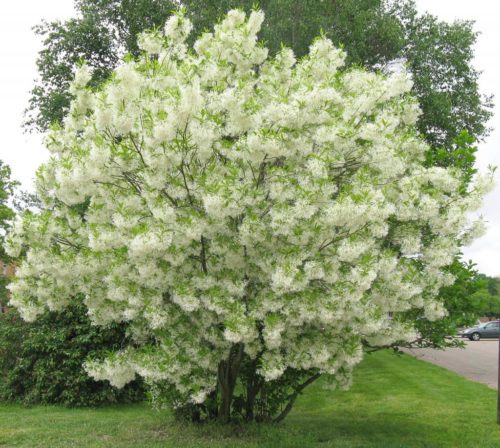
Lilac Amurskaya looks equally beautiful both in group landings and single. Shrub can be planted near other varieties of lilac to emphasize the pictorial contrast. In addition, lilac connoisseurs will be able to enjoy the beautiful aroma even longer if they are placed on the area of \u200b\u200bAmur Lilac. After all, the shrub begins to bloom in about 3-4 weeks after flowering the lilac of ordinary, for example.
Lilac Amur perfectly combined with the following decorative cultures:
- peonies;
- brilliant kissel;
- sugit;
- spirea Wag-Gutta;
- tamarisk;
- forzition;
- cUBUBUS;
- felt cherry;
- magonia adhesive;
- wegella;
- klyon Drummond and others.
Trescun Amur is superbly suitable for decoration of recreation areas near reservoirs. The close location of the water will be positively affected by the appearance of the plant, making the color of foliage even more and brighter. Designers often choose this plant to decorate the front entrances to the building.
Amur lilac can become a real pearl of your garden. A high shrub with a dense green crown and huge snow-white inflorescences, publishing a unique fragrant fragrance, will constantly throw a look.

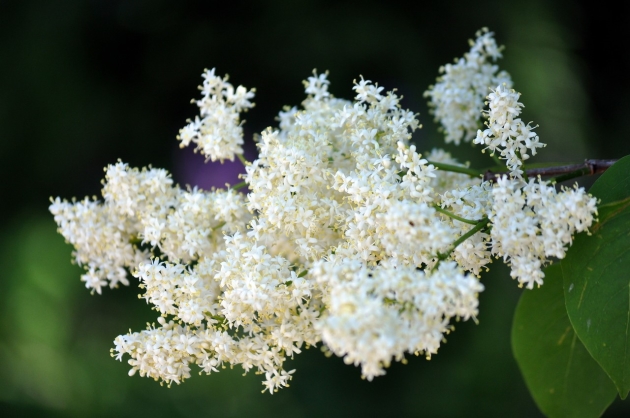
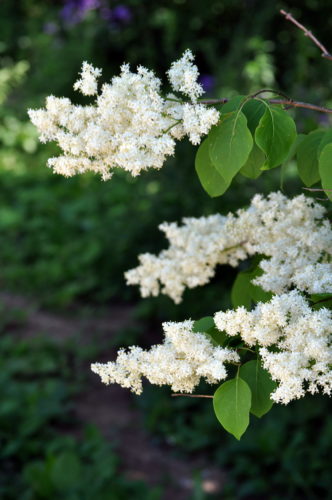
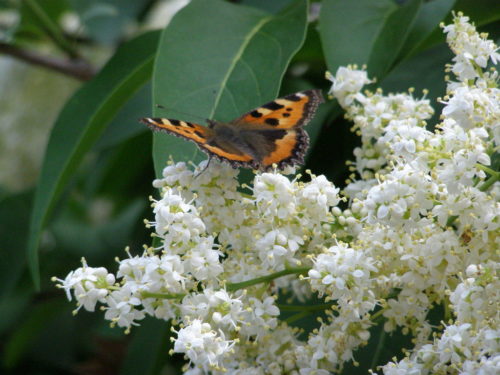
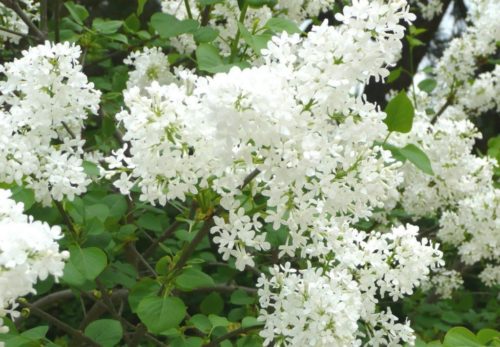
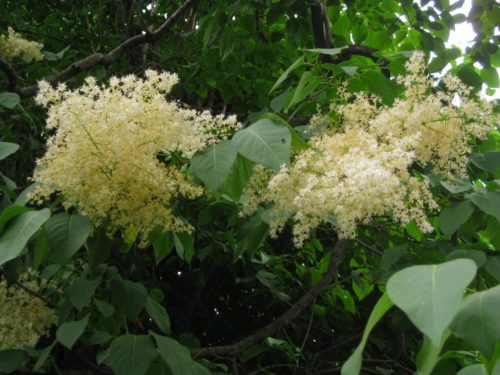
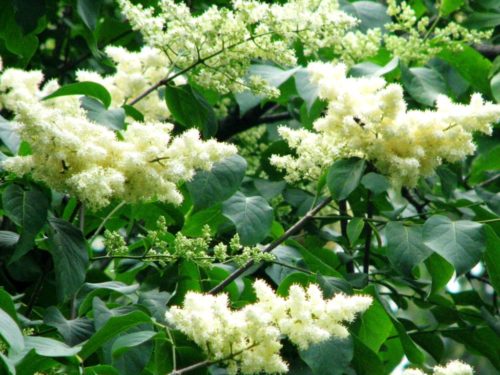
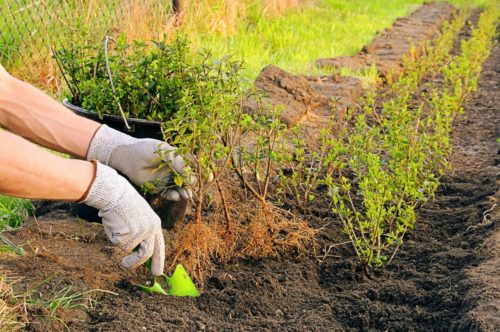
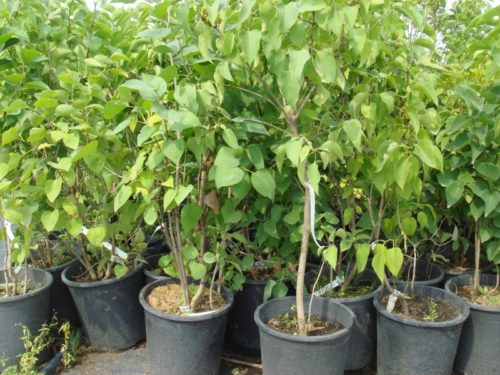
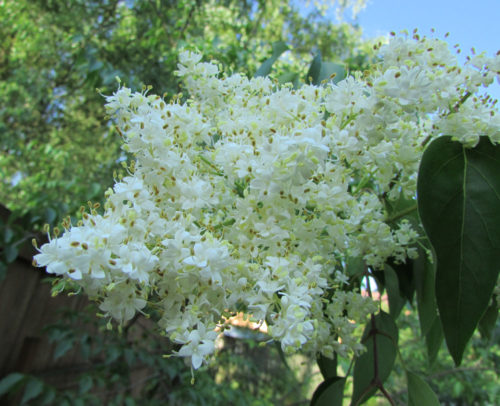


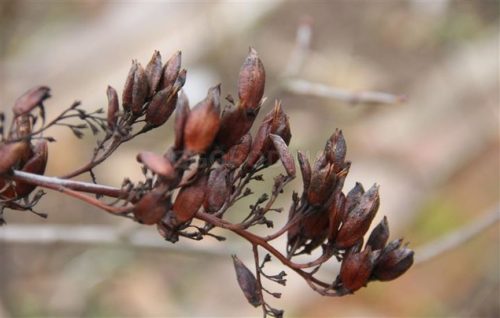
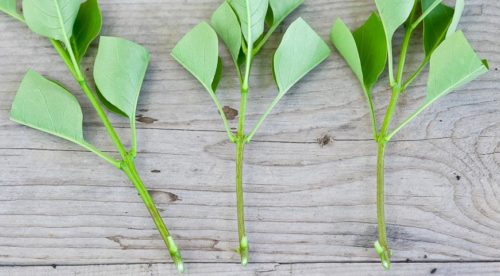
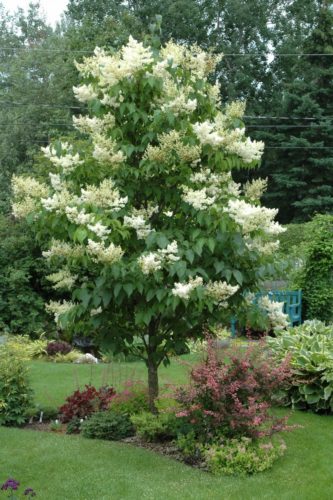













 Start a discussion ...
Start a discussion ...